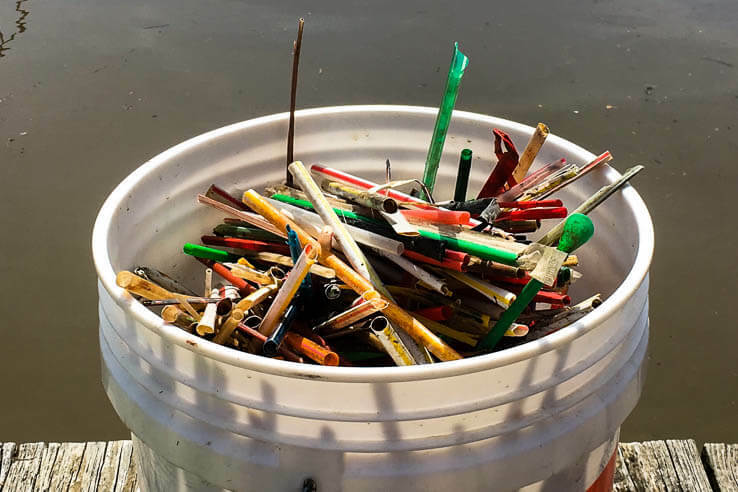Fighting pollution one sip at a time
Campaigns target the commonplace use of plastic straws

Plastic pollution is a growing problem for our natural resources. One study projects that by 2050, our oceans will contain more plastics than fish by weight. Common sources of pollution, like plastic bags and bottles, have been targeted by environmental activists for years. More recently, many have set their sights on a seemingly small mark: plastic straws.
Why straws?
Plastic straws came to the public’s attention in 2015 when a video of sea turtle with a straw stuck in its nose went viral. The video provided a clear sense of the impacts that discarded straws can have on wildlife. But how do straws compare with other types of plastic pollution?
The impact may be bigger than you think. The Ocean Conservancy’s 2017 report ranks plastic straws in the top ten most common items found at beach cleanups. In the United States, we use 500 million straws each day—that’s 1.6 straws per person. Since straws aren’t recyclable, they end up in landfills, but many find their way into our waters.
Straws are also targeted because in most cases, they simply aren’t necessary. Many people are just as happy to drink from a glass, but straws are given out automatically in many restaurants. Across the country, local campaigns are telling people “Don’t suck, sip responsibly,” in an effort to get people to order their drink without a straw. They are also asking restaurants to provide straws only when asked.
 Earth Day 2018 volunteers found more than 1,800 straws along the Anacostia and its tributaries. (Photo by Anacostia Watershed Society)
Earth Day 2018 volunteers found more than 1,800 straws along the Anacostia and its tributaries. (Photo by Anacostia Watershed Society)
Alternatives to plastic straws
While many people can simply avoid using straws, they can be a necessity in hospitals, for young children or for people with disabilities or injuries. Companies are addressing this need by creating straws out of a variety of different materials.
One popular alternative is the compostable straw. Made from corn starch or cellulose, they closely resemble the classic plastic version. However, they still aren’t recyclable and are not designed to decompose in water. If they aren’t properly disposed of at an industrial compost facility, and get into our waterways, they’ll stay there for a long time.
Paper straws are another disposable alternative. Those who don’t enjoy paper disintegrating in their drinks will be happy to hear that newer versions hold up much longer, and they’ll still be able to decompose on land or dissolve in water within a month or two.
Those who don’t want a disposable straw can look into reusable ones made from materials like metal, bamboo, glass and silicone. There are even rubber molds to make straws out of ice—a cool idea for a summer day.
The broader picture
Plastic straws are just one part of the broader issue: plastic pollution. Plastic trash can smother plants, harm wildlife and detract from the natural beauty of the Chesapeake Bay. By reducing the use of disposable plastic, properly disposing of trash and participating in stream cleanups, we can all do our part to make the Bay healthier and more beautiful.
Learn more about litter in the Chesapeake.

Comments
Great article. Thank you for highlighting the complex issues and problems regarding the use of plastic straws and their alternatives.
Thank you!
Your comment has been received. Before it can be published, the comment will be reviewed by our team to ensure it adheres with our rules of engagement.
Back to recent stories